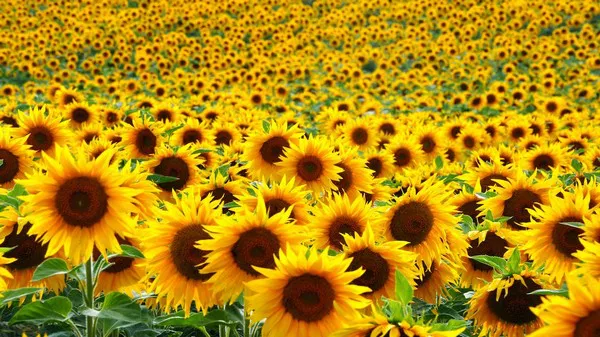Sunflowers, with their vibrant and cheerful blooms, have long been a symbol of warmth and happiness in gardens around the world. While many people associate sunflowers with annuals that need to be replanted each year, there are several perennial varieties that can bring enduring beauty to your garden. In this comprehensive guide, we will explore the world of perennial sunflowers, discussing their characteristics, cultivation, and how to incorporate them into your landscape for long-lasting enjoyment.
Understanding Perennial Sunflowers
Perennial vs. Annual Sunflowers
Before delving into specific perennial varieties, it’s essential to understand the difference between perennial and annual sunflowers. Annual sunflowers complete their life cycle within one growing season, germinating, flowering, setting seed, and then dying. Perennials, on the other hand, persist for multiple growing seasons, returning year after year with proper care.
Characteristics of Perennial Sunflowers
Perennial sunflowers share some common characteristics that distinguish them from their annual counterparts. These include deep taproots, which help them withstand drought conditions, and the ability to form clumps or colonies over time. Additionally, many perennial sunflowers exhibit a longer blooming period, providing an extended display of their radiant flowers.
Popular Varieties of Perennial Sunflowers
1. Helianthus angustifolius (Swamp Sunflower)
The Swamp Sunflower is a stunning perennial species known for its tall stature and bright yellow blooms. Native to wetlands and moist areas, this sunflower adapts well to various soil types. With a late summer to fall blooming period, Helianthus angustifolius adds a burst of color to your garden when other plants may be waning.
2. Helianthus maximiliani (Maximilian Sunflower)
Maximilian Sunflower is a tall and graceful perennial species that can reach heights of up to 10 feet. Its golden-yellow flowers and slender leaves create a striking visual impact. This sunflower is drought-tolerant and thrives in full sun, making it an excellent choice for gardens with well-drained soil.
3. Helianthus ‘Lemon Queen’ (Lemon Queen Sunflower)
Lemon Queen Sunflower is a hybrid perennial variety renowned for its lemon-yellow petals and dark centers. It typically grows to a moderate height, making it suitable for both borders and the back of flower beds. The extended blooming period of Lemon Queen adds a touch of sunshine to your garden from midsummer well into fall.
4. Helianthus salicifolius (Willowleaf Sunflower)
Willowleaf Sunflower is characterized by its narrow, willow-like leaves and golden-yellow flowers. This perennial sunflower is well-suited for prairie-style plantings and naturalistic landscapes. Its ability to thrive in dry, well-drained soil makes it a resilient and low-maintenance choice for perennial gardens.
Cultivating Perennial Sunflowers: Tips for Success
1. Site Selection
Choosing the right location is crucial for the success of perennial sunflowers. Most varieties prefer full sun, so select a spot that receives at least six hours of direct sunlight per day. Ensure the soil is well-drained, as these sunflowers are susceptible to root rot in waterlogged conditions.
2. Soil Preparation
Prepare the soil by incorporating organic matter such as compost to improve fertility and drainage. Perennial sunflowers are adaptable to various soil types, but they thrive in moderately fertile, loamy soil. Conduct a soil test to assess nutrient levels and make amendments accordingly.
3. Planting and Spacing
Plant perennial sunflowers in the spring or fall, allowing them to establish roots before the growing season. Follow spacing recommendations for each variety to prevent overcrowding, which can lead to increased competition for nutrients and moisture.
4. Watering and Maintenance
While perennial sunflowers are generally drought-tolerant, adequate watering is crucial during their establishment period. Once established, they require minimal maintenance. Deadhead spent flowers to encourage continuous blooming and cut back stems in late fall or early spring to promote a tidy appearance.
Incorporating Perennial Sunflowers into Your Garden Design
1. Mixed Borders
Planting perennial sunflowers in mixed borders alongside other perennials, ornamental grasses, and shrubs can create a dynamic and visually appealing garden display. Consider the height, color, and bloom time of surrounding plants to achieve a harmonious composition.
2. Wildflower Meadows
For a naturalistic and low-maintenance garden design, incorporate perennial sunflowers into wildflower meadows. Their bright blooms will contribute to the overall beauty of the meadow, attracting pollinators and providing a habitat for beneficial insects.
3. Cutting Gardens
Certain perennial sunflowers, such as the Lemon Queen variety, make excellent additions to cutting gardens. Harvesting their long-lasting blooms for floral arrangements allows you to bring the beauty of your garden indoors.
Challenges and Solutions
1. Pest Management
While perennial sunflowers are relatively resistant to pests, occasional challenges may arise. Keep an eye out for aphids, caterpillars, and powdery mildew. Use organic methods such as neem oil or insecticidal soap to address pest issues without harming beneficial insects.
2. Dealing with Spread
Some perennial sunflowers have a tendency to spread and form colonies. To control their growth and prevent overcrowding, consider installing barriers or regularly dividing and transplanting the plants.
Conclusion
Incorporating perennial sunflowers into your garden can provide years of vibrant color, height, and ecological benefits. Understanding the characteristics of different varieties, coupled with proper cultivation and design considerations, will ensure a successful and enduring display. With their resilience and beauty, perennial sunflowers stand as a testament to the lasting joys of gardening. Embrace the diversity of these sun-loving perennials, and let your garden bask in their radiant glory year after year.


